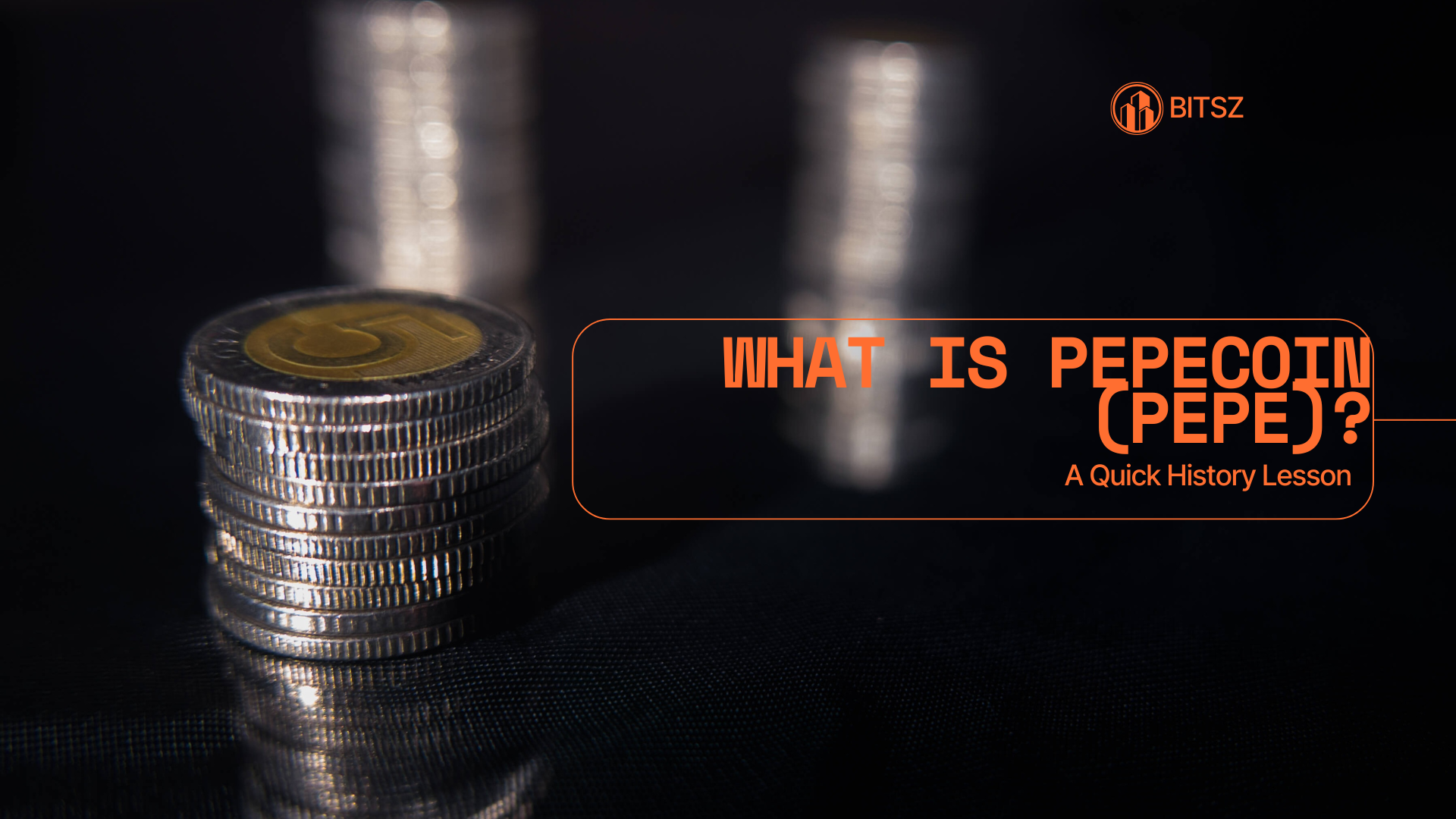
Pepecoin (PEPE) stormed into crypto headlines in spring 2023, turning an internet frog into a multibillion‑dollar token almost overnight. But PEPE’s story stretches back years before the ticker appeared on charts. This article traces the meme’s cultural origins, the token’s launch and listings, its distinctive tokenomics, and the lessons PEPE offers about meme‑coin manias.
From Comic Panel to Internet Icon
Pepe the Frog began as a laid‑back character in Matt Furie’s 2005 indie comic Boy’s Club, long before crypto existed. Over the 2010s the frog went viral, was later co‑opted by extremist groups, labeled a hate symbol by the ADL, and even “killed off” by its creator in a comic to reclaim the character.
That volatile cultural arc set the stage: Pepe was already one of the web’s most recognizable memes when a new ERC‑20 token adopted the name and imagery in 2023—without Furie’s authorization.
Launch Fever: April–May 2023
The PEPE token quietly deployed on Ethereum in April 2023. Within weeks, its market cap ballooned—helped by viral Twitter threads and speculative flows rotating from bigger memes like DOGE and SHIB. On May 5, 2023, Binance listed PEPE in its Innovation Zone, a move that typically signals extreme volatility and experimentation.
By that same day, CoinDesk reported PEPE had hit roughly a $1 billion valuation, an extraordinary ascent for a project with no formal roadmap.
Tokenomics at a Glance
- Max supply: 420,690,000,000,000 PEPE (a nod to meme numbers “420” and “69”).
- Initial distribution: ~93.1% sent to the Uniswap liquidity pool; the LP tokens were burned.
- Treasury slice: ~6.9% held in a multisig wallet for listings, bridges, and future growth.
This extreme supply (hundreds of trillions) is why “$1 PEPE” headlines are fantasy: reaching a dollar with that float would require a market cap larger than global GDP. Even Cointelegraph’s price index notes the math doesn’t work unless supply shrinks drastically.
As of mid‑2025, CoinMarketCap still shows the circulating supply essentially maxed out at ~420.69 trillion, underscoring that dilution isn’t the lever—speculative demand is.
Timeline: Key PEPE Milestones
- 2005–2016: Pepe meme evolves online; later becomes controversial.
- April 2023: PEPE token launches on Ethereum. (Multiple market trackers list creation in mid‑April.)
- May 5, 2023: Binance listing; cap spikes toward $1 B.
- May 2024: Trading volume triples after new ATH—showing renewed speculative cycles.
- 2024–2025: Meme‑coin sector booms again; PEPE remains a top performer in several rotations.
Why Did PEPE Explode?
- Brand Recognition: The frog meme had years of internet mindshare.
- Rotational Capital: Traders took profits from BTC or other memes and hunted higher beta plays.
- Low Unit Price Illusion: Trillions of tokens make each unit look “cheap,” enticing newcomers.
- Exchange Listings: Major CEX support (Binance, others) turbocharged liquidity and visibility.
The Risks: Copyright, Centralization & Hype Cycles
- Copyright Gray Zone: Furie owns the character; while a token can exist, legal action around branding or NFTs is possible (he’s sued projects before).
- Anonymous Team: The devs remain pseudonymous; treasury control is in a multisig, but transparency is voluntary.
- Meme Volatility: Meme coins routinely swing 50% in days. Cointelegraph chronicled PEPE volume surging 216% days after an ATH as price slid—classic whipsaw behavior.
How to Research and Trade PEPE Responsibly
- Check On‑Chain Data: Look at token holder concentration and recent wallet movements on Etherscan or Nansen before buying spikes.
- Read Tokenomics: Understand the supply cap and treasury wallet permissions.
- Use Stop Orders/Alerts: Volatility means you need rules for exits.
- Diversify: Treat PEPE as a speculative slice, not a core holding.
- Watch News Cycles: Meme rallies often sync with bigger market catalysts (BTC highs, ETF flows).
PEPE’s Place in the Meme‑Coin Landscape
The meme‑coin sector now spans multiple chains (Solana’s BONK, WIF) and marketing styles (community‑driven, celeb‑endorsed). PEPE stays relevant because:
- Liquidity remains deep on CEXes and DEXes.
- The frog meme keeps mutating—new derivatives, burns, or marketing pushes.
- Traders love narrative relays (e.g., “dog coins peaked, frog season next”).
Yet PEPE also illustrates the ceiling of pure memes: without utility, keeping attention costs constant hype. The token’s long‑term path likely depends on whether the community funds real products—or keeps playing narrative ping‑pong.
Will PEPE Last?
That depends on three levers:
- Community Execution: Can PEPE fund tools, games, or DeFi integrations that outlive the current cycle?
- Legal Pressure: If brand litigation escalates, exchanges could restrict logos or marketing.
- Macro Liquidity: Meme coins thrive when risk appetite is high; if rates rise or BTC chops sideways, speculative capital dries up.
Key Takeaways
- What is Pepecoin (PEPE)? A 2023 ERC‑20 meme token leveraging an infamous internet frog, rocketing to a $1 B cap within weeks.
- Tokenomics: 420.69 T supply, 93.1% in burned LP, 6.9% in a multisig for growth.
- Listings & Hype: Binance listing on May 5, 2023, cemented mainstream visibility.
- Volatility Reality: Volume can triple even as price falls—don’t confuse liquidity with safety.
- $1 Dream? Mathematically implausible without massive supply destruction.
PEPE is more than a ticker—it’s a case study in how internet culture, speculative capital, and exchange infrastructure can fuse into a whirlwind. Whether you buy, pass, or just watch the memes, learn from its history: in crypto, narrative is fuel—but tokenomics and risk management are the firebreaks.